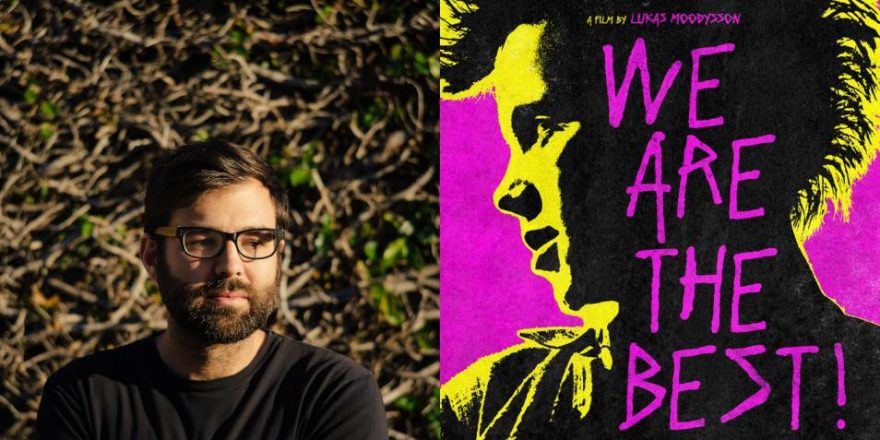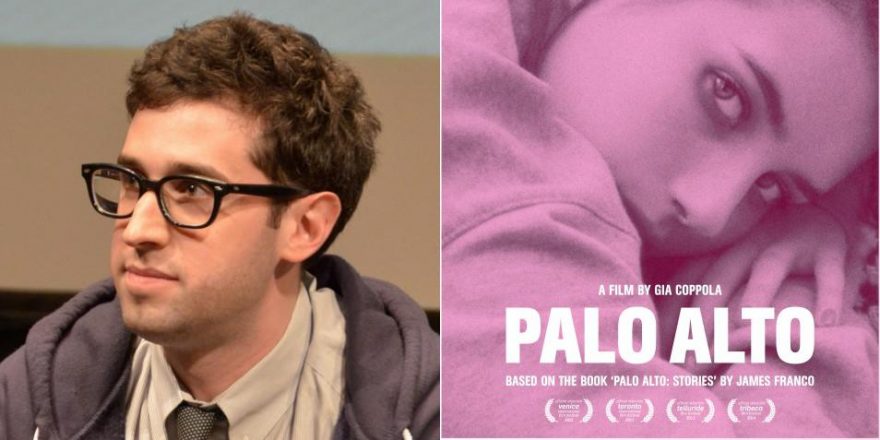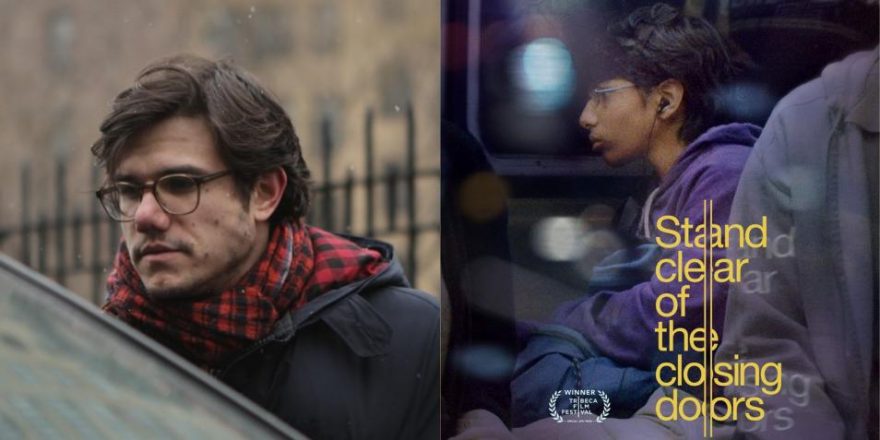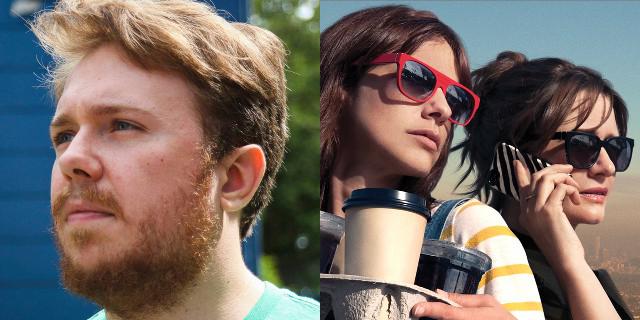In spring 2005, after learning that Lukas Moodysson’s new film, A Hole in My Heart, was opening only on one screen in NYC, I contemplated taking a redeye flight that Friday night, seeing the movie a couple times on Saturday, and then flying back home on a redeye Saturday night. Tickets were just too expensive. So instead, that weekend I purchased a hacked DVD player down the street at Cinefile so that I could revisit Lilya 4-Ever, his third film, which at the time only existed on the PAL format.
The world is divided into two types of people: you’re either a rabid fan of Moodysson (like myself), or you just haven’t seen his films yet. So before talking about his latest, the great We Are the Best!, I’d like to give a little primer on his work for the uninitiated.
Moodysson’s first feature film, Fucking Åmål (released here under the neutered title Show Me Love) is a hilarious and heartbreaking tale of a young lesbian crush. You might think to mention it in the same breath as the best John Hughes or Cameron Crowe movies – it’s certainly just as full of memorable moments – but while those films are very much movie-movies, Moodysson skews his reality far more raw and real. It’s a pristine portrait of yearning; the time when we all wish for a life that is far more exciting than the four years of high school provide. A time when you want to fall in love so badly, that perhaps you convince yourself to fall in love with the wrong person.
Tillsammans (Together), his second film, is a heartwarming and moving story about a broken family living in a Swedish commune in the mid 1970s. Underneath all the fun nostalgia, Moodysson creates such a distinct set of characters whose insecurities and ideologies crash into one another in unassumingly electric and unexpected ways. It is a truly original dramatic comedy, crafted with such warmth. Whenever I’m feeling down about how hard it is to make movies, I revisit this one and am reminded why we do this. It might just be my favorite film of all time.
Lilya 4-Ever is an incredibly dark account of a young victim of human trafficking. Despite the fact that the film just relentlessly beats the shit out of you, enduring it is worth it. Unlike the other depressing-as-fuck European films that were in vogue at the time (see also: Dancer in the Dark, Irreversible), there’s not a single moment of onscreen violence or sex. Moodysson’s trademark humanity shines through. And the ending, which could not be more bleak, is oddly a positive one for the character, given the circumstances she’s been faced with.
While many filmmakers dabble in different styles before discovering their natural voice, Moodysson seems to have come right out of the gate with his voice distinct and uncompromised. And so it makes sense that after these three masterful films, he tried some other styles on for size. While this can lead to great work, in the case of Woody Allen channeling Hitchcock in Match Point, or Tom Tykwer doing Kieślowski in Heaven, Moodysson’s in-your-face von Trier-esque A Hole in My Heart and sprawling Iñárritu-esque Mammoth didn’t quite work. For me, they were just missing the heart his first three films were dripping with.
But that’s okay. Whatever the result of these tangents, Moodysson has leaned even further in to his natural voice, and unleashed We Are the Best!, a seriously rad film about teenage angst. The premise is simple: two teenage punks, Bobo and Klara, accidentally form a band after kicking out the heavy metal bullies from their local youth center practice space. Since they have no idea how to play their instruments, they enlist Hedvig, a guitar prodigy and the most religious girl at school, to join the band. It’s simple. We watch conflict arise between them and their parents. A rift emerges when two of the girls fall in love with the same boy. And ultimately these three outcasts must join back together to play the big show at the end. It’s Nobuhiro Yamashita’s Linda Linda Linda by way of Charlyne Yi. In an alternate universe, it would air on television as often as School of Rock; a cozy sweater of a film you’re so happy to catch the last 20 minutes of for the hundredth time.
Wim Wenders once said: “There is a relationship between places and stories and characters that make them specific: in the world of movies, only what is specific can become universal. Movies now have the opposite idea: the universal to them is the most general, the least rooted, based on homilies of other movies, fake stories, fake people, fake movies.” And I think Moodysson’s work, especially We Are the Best!, is a perfect example of specificity breeding universality.
There’s one especially hilarious moment where the introspective Bobo unwraps a Christmas gift from her mom’s new weirdo boyfriend, only to discover that he has given her a block of cheddar cheese. She doesn’t know how to react. In another moment, the father of the outspoken Klara barges in on their jam session with his clarinet, because he wants to play too. They have to force him out of the room.
I think every middle school kid feels like their parents are aliens. It’s a time when life isn’t quite as simple as elementary school and these new emotions are totally foreign. And on a macro level, this film could have been set in any era, but Moodysson decided to set it in the year 1982, when he was the same age as these characters. That’s how you make it personal, and by doing so the film just gets it right. It perfectly captures the time in everyone’s life when all you want to do is rebel, but the only thing you have to rebel against is gym class.
And Moodysson’s specific visual style could not be a more perfect way to capture this. I have so much respect for directors who stay out of the way of performance, and make cuts only when necessary. Moodysson’s coverage is extraordinarily simple, frequently from one or two camera positions. But his camera is curious – he often covers his scenes with a type of shot that is so Moodysson, where he’ll start in a two shot, then zoom in to a closeup of one of the characters speaking, and then pan to a closeup to the other character listening. It almost feels like a documentary from the 1960s. He’s been doing this move ever since Fucking Åmål, and it’s so effective, allowing him to keep the scenes totally loose and freeing for his actors, while still making specific visual decisions. The zooms are always done by hand, rather than with a servo, so the subtle impreciseness acts as a reminder that this film was indeed crafted by a human.
All of these things are so important. At times, it feels like we’re in a creative drought, the creation of new pop culture being halted in favor of recycling old pop culture. We’re obsessed with repeating past successes instead of looking towards the future. And in a way, it almost feels like cynicism is in the zeitgeist.
But in 2014, the thing I crave the most is genuine human interaction. I think a lot of people feel this way. Vulnerability is the new black. And so in the spirit of punk rock, the only thing we can do is start a new movement where we put ourselves on screen more than ever, and try to have a genuine conversation with our audiences. I do think this is starting – last year alone between Short Term 12, Before Midnight, The Spectacular Now, and Inside Llewyn Davis,we had a bumper crop of original heartfelt movies. So this wonderful return to form for Moodysson is hopefully continuing to establish this trend in cinema.
And if you don’t like it, well then fuck off. We Are the Best! Is The Best! We Are the Best! Is The Best!






